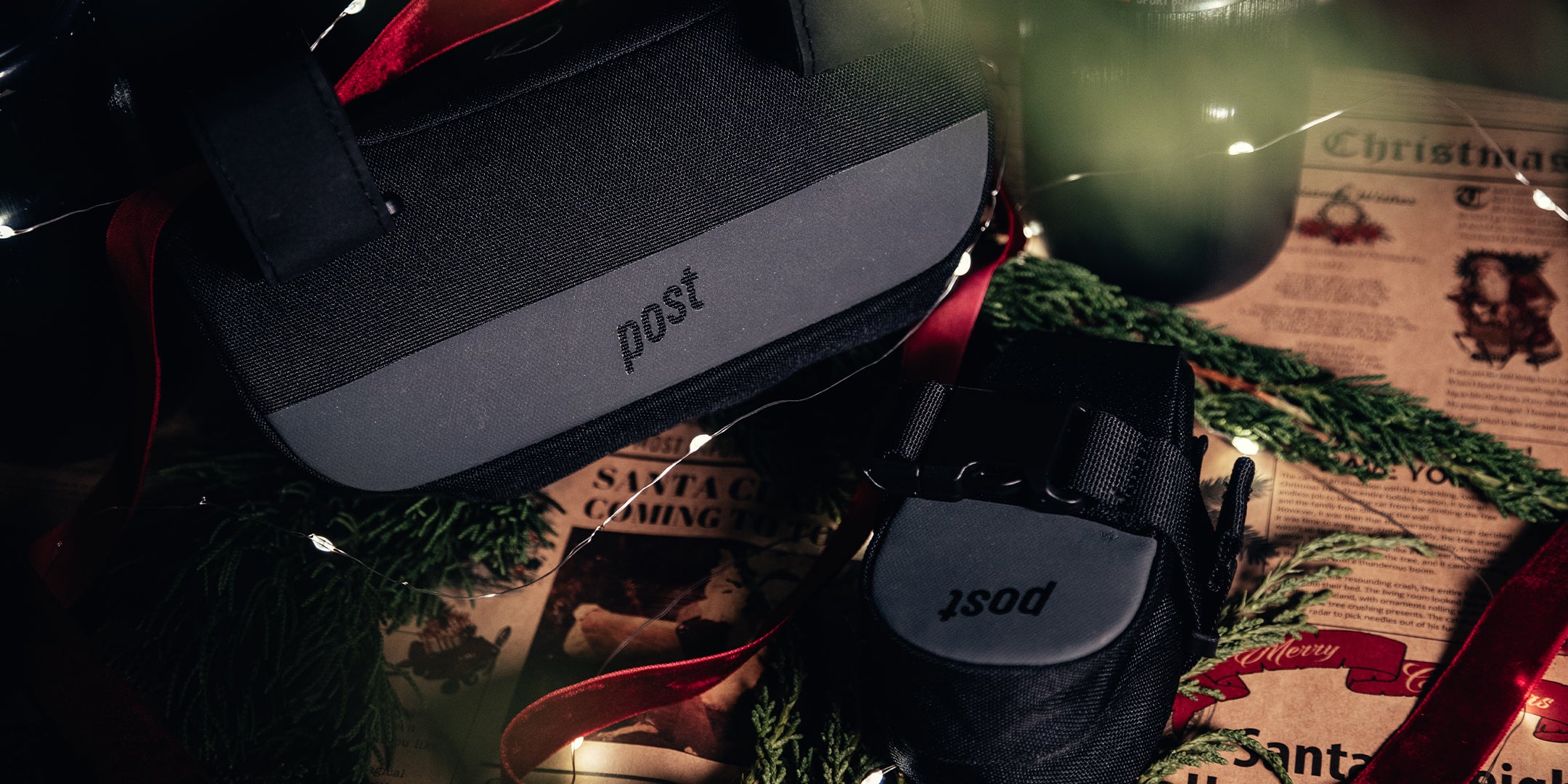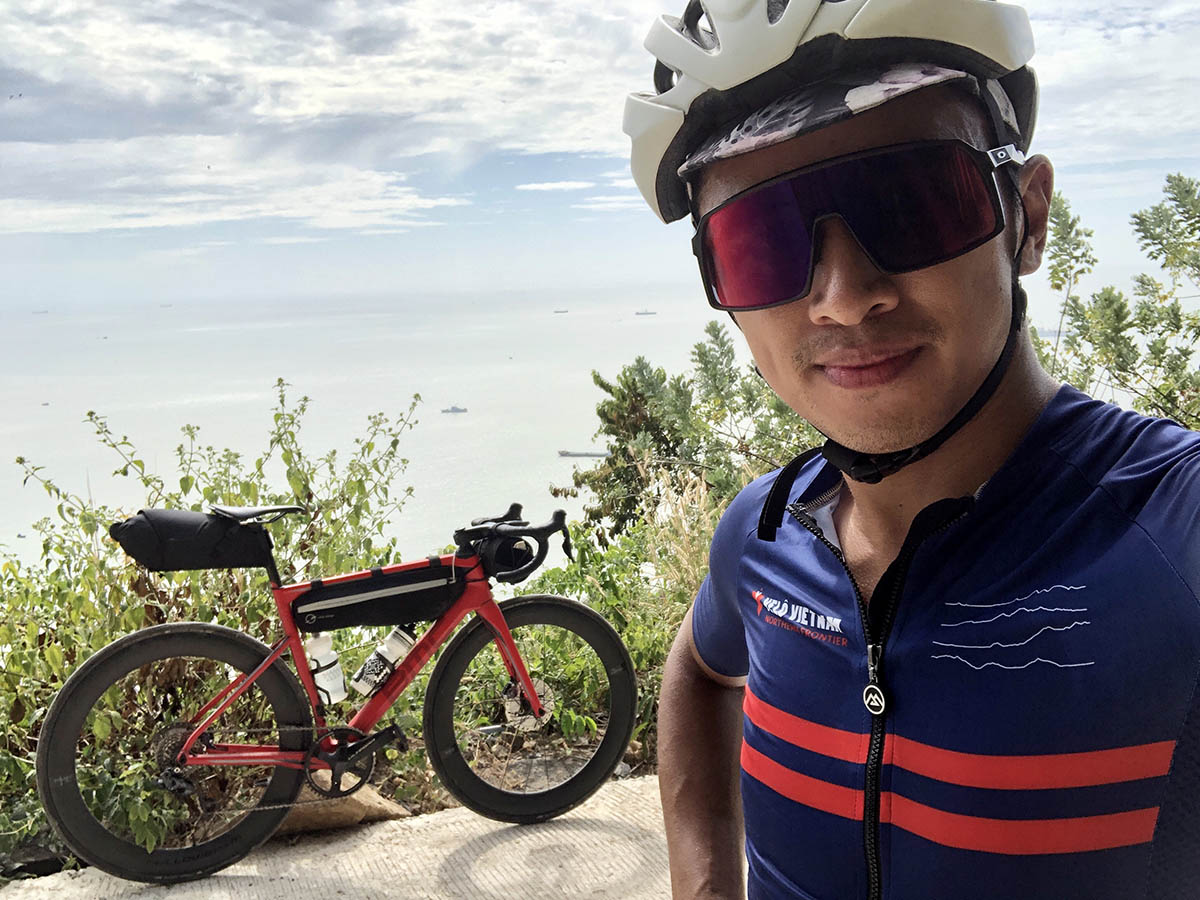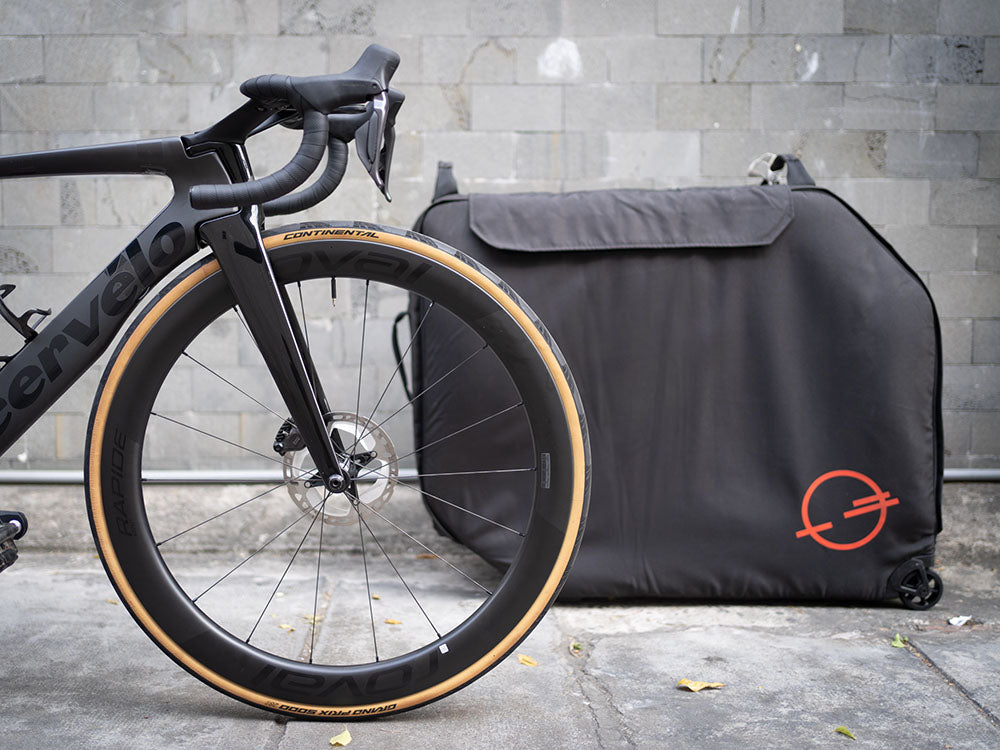
This guest post is from Nicholas (@playitfaster).
Leave an old life behind to go ride bikes - at this point it’s a well-worn trope in the cycling community. I had spent a decade on the corporate grind trying to follow the idealized American path - college, work, marriage, buy a house, etc… My wife and I looked around one day and thought we’d try something else: sell everything and use the money to slow travel through Europe and South America, working on our language skills, meeting people, making friends, and decompressing from our previously suffocating corporate existence. She would do so through the lens of art as a watercolor painter, while I would take this journey on my bike - both metaphorically and literally.
I had treated myself to a new fully-integrated carbon superbike just a few months before we made the decision to upend our lives. In retrospect, the purchase was a desperate grasp for dopamine via retail therapy, and happily the subsequent re-arrangement of my life solved the problem on a more fundamental level. Nevertheless, the hydraulics, tubeless, easily bent disc rotors, and integrated cable routing wasn’t going to be ideal or affordable for a travel bike. Packing and unpacking the bike every few months, tiny cabs, tiny planes, tiny apartments, and avoiding bike fees on tiny airlines had led me to select the Post Carry Co Transfer Case for the trip. This would prove wise as soon as the very first leg of our trip when necessity dictated that I share the back seat of a 15 year old Fiat Panda with my bike bag as we bumped over the cobbled streets of Sicily. Buying a bike to fit in your desired travel case may seem backwards, but the only function of this bike was travel, and I knew there would be challenging transit conditions. However, beyond that, I had no idea what I would encounter on this adventure. In addition to being an all-road explorer and light tourer, the bike also had to function as a fast club racer as the group ride and social aspect of this adventure was essential.
There is irony in adding another bike while I was doing my best Marie Kondo for the rest of my life, but n+1 always rules, so I set about searching the local co-ops, Craigslist and Marketplace. Knowing very little about the roads, bike shops, and mechanics I might have access to, I thought it would be a good idea to keep the bike dead simple, easily serviceable, and compatible with as many parts as possible. I have always loved steel bikes, so when this Trek 610 popped up on my local Craigslist a few weeks after the big decision, I went to check it out immediately. Handmade in Waterloo, Wisconsin in 1984, it features slightly stretched touring geometry, a Reynolds 531 frame, excellent graphics and paint, and room for some 33c tires on 700c rims (owing to the original 27” wheels.) I could see it becoming the perfect all-road bike, willing to carry me on gravel quests or over fire roads and singletrack in search of adventure, but truly at home ripping broken asphalt or conquering Andean passes. Bonus points for being handmade in the USA - despite my general lack of patriotism, there was something poetic about escaping the country with a classic American bike.
The build would be guided by principles of simplicity, serviceability, and cost. I had no desire to find out if 12-speed chains or AXS batteries were available in a small town in Ecuador, and I have enough trouble with bottom brackets stateside that I wanted to avoid anything I couldn’t service myself.
Most bits came from my parts bin, ebay, and the local co-op where I had been volunteering. Even then I couldn’t resist a couple indulgences. The HED Belgium rims suited the intended use of the bike perfectly and lent some credibility to what is otherwise verging on a ratbike. A Velo Orange two-bolt quill stem keeps it classy when seen with the original Shimano 600 brakes, and allowed me to mount my preferred gravel bar with the 31.8mm clamp.
It’s pretty much all downhill from there though. I scrounged some beat shifters from eBay, a 9-speed rear mech, and a front derailleur from the murky depths of Shimano’s low-end offerings (total cost: $38.) I reused the Tange loose ball bottom bracket which was original to the frame paired with a square taper FSA 50/34 crankset from the co-op parts bin.
We started our adventure in Sicily where I had contacted a local guide to ask about route recommendations. In true Sicilian fashion, he responded that they had a camp coming up, that I must attend, there would be beer and grilling, and he absolutely would not take no for an answer. I got some funny looks on the first day, the Trek standing out amidst all the carbon superbikes. That said, there was no snobbery and in fact quite a few compliments on the classic silver parts and Reynolds frame. The camp was an amazing intro to my new lifestyle and chance to deeply get to know the new bike. We did around 9000 m of elevation in 5 days, riding around the skirt of Mt. Etna and on the final day summiting along the route that Stage 4 of the Giro would follow hours later. At no point did the Trek falter, even on Day 2 hammering on a wet descent at 80km/h just to stay warm after being caught in a rain-snow mix on one of Etna’s lower summits.
This was all new to me - I had never really cycled outside of the United States before, let alone in a foreign country with a different language and different rules. Following the camp I had to go it alone, and started exploring the numerous backroads, gravel tracks, and seemingly infinite routes up Etna. The Trek always happily carried me wherever I wanted to go, both around Sicily and for the rest of the year as we moved to a new country every 2-3 months.

In Cuenca, Ecuador, I rode to the 4200m summit of Cajas National Park from both the road and gravel side and explored every river valley and gravel track disappearing into the clouds. I was welcomed on fire road MTB group rides, and took on hammer-and-tongs 2000m+ outings with the local road clubs. I did a local road race through the Andes outside Cuenca, on open roads with vaguely enforced rolling closures. I’ll never forget trading pulls in the chase group (Elite Ecuadorian men are, unsurprisingly, very fast) while getting gap times from a moto with a chalkboard. The whole experience channeling post-war Euro race vibes dodging livestock, tractors, and street dogs, enduring random gravel segments on a vintage steel bike.

In Mendoza, Argentina, I followed the route of the mountain stages of the Vuelta San Juan, past the hills West of the city to Potrerillos, Punto del Inca and beyond. On long, hot rides through the vineyards, I tested my legs against the wine and meat hangovers as much as the terrain, the Trek always there, gliding along joyously as only vintage steel can do.
In Santiago, Chile I found bike heaven on Cerro San Cristobal and the hills around it - the green lung of the city and a cyclist playground closed to cars. Seemingly endless loops of intertwining well-surfaced asphalt roads, gravel tracks and downhill MTB trails garland the peak that sits directly next to downtown Santiago’s cluster of skyscrapers. Every weekend the cerro transforms into a spontaneous festival for thousands of cyclists of all types. Every weekday morning it is a training camp for the devoted to test and train themselves against the 250m climb.
On New Year’s Day in Santiago, I went to a meetup for a chill gravel ride organized by a local shop. Happily several other attendees were sporting cool vintage bikes and we made fast friends while circumnavigating Cerro San Cristobal including some memorable hike-a-bike and enduro segments. A few days later I was messaging on Instagram with one of the people I met, a young kid named Fabian. He wanted to get into ultracycling, bikepacking and touring and thought a frame like mine might be a good way to get started. Even as the most developed country in South America, new gravel and touring bikes are still shockingly expensive in Chile, especially for a college student. We were chatting about tire clearance, standards, other good models of old steel bikes to look for, amongst the other minutiae that retrogrouches (no matter our age) are apt to discuss. Ultimately, I decided to just give him the bike when I left Santiago in late January. I had thought about selling him the frame but considering what I paid and what it was worth, the $200 didn’t seem worthwhile to potentially violate Chilean imported goods law.
Despite my absolute adoration of vintage bikes, the truth was I needed a slightly more modern and robust bike to continue my travels. I was so much stronger since leaving my sedentary life and desk job behind and riding nearly every day that I was nearing the Trek’s limits. Feeling the frame flex under a town-line sprint on a fast club ride or groan as I hauled my empanada and Haribo stuffed carcass up a 20% gravel gradient had me convinced a Ritchey or Fairlight was in my immediate future. (I ended up with an All City Mr. Pink - more modern, still steel) Fabian is the same height as me but must be 10kg lighter, so the small-diameter tubing, triple-butted Reynolds 531 frame suits him perfectly. The timing was perfect as well - Santiago marked nearly a year of travel, so our next stop was the USA to visit family before continuing the adventure. This would give me a chance to find a new frame and replacements for what parts I didn’t leave with Fabian.
The day before I was to leave Chile, Fabian came to pick up the bike. His mother had driven him and the three of us chatted in the lobby of my apartment building, their heavy Chilean accent stretching the limits of my Spanish abilities. In between having my cheeks pinched (by his mom, not Fabian) and offers of fabulous desserts and home-cooked meals should I return to Chile, I gathered that his mom was perhaps more excited for this bike than Fabian. She reveled in the opportunity to see her son so happy. Their shared enthusiasm and the utter wholesomeness of the situation eased any lingering worries I had about parting with my trusty companion for the past 9000 km of adventure.

In the end, the bike passed from me to him like it was meant to be, providing a fitting end to six months of adventure and discovery in South America. I have fond memories of so many rides, places, and scenery, but what I’ll remember more are the connections I made. This last gesture of friendship and goodwill, borne of a shared love of cycling, perfectly encapsulated the spirit of travel that I was looking for when my wife and I first set out on this adventure. I love to daydream of the epic Chilean fondos, ultras and bikepacking adventures the Trek will take Fabian on, which is what I imagine the builder had in mind way back in 1984 when they first put flame to silver in a small barn in Wisconsin.
Build List:
Travel Bag: PCC Transfer Case 135L
Frame: 1984 Trek 610, Reynolds 531c Tubeset
Headset: Stronglight 1" Threaded
Bottom Bracket: Tange Precision Loose Ball
Crankset: FSA Vero Square Taper 50/34
Rear Mech: Shimano Alivio 9sp
Front Mech: Claris 2x
Levers: Shimano 2x9 Tiagra
Brakes: Shimano 600 Long-Reach
Stem: Velo Orange Quill 2 bolt
Bars: FSA Adventure Compact
Saddle: Terry Ti Fly
Pedals: SPD PD-M520
Wheels: HED Belgium + front/ HED Belgium C2 rear
Road Tires: Schwalbe Pro One Tubed 32c
Gravel Tires: Schwalbe X-One Speed 33c
Cassette: 9 sp 11-36
Chain: KMC 9-Speed
Cables: Velo Orange
Brake Pads: Kool Stop
Bar Tape: ZIPP Service Course
Downtube Cable Stop: Velo Orange
Bell: Velo Orange Brass Striker Bell




